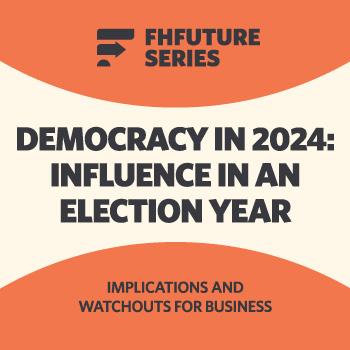The Covid-19 pandemic: lessons for the climate crisis

By Daniel Silberhorn, Corporate Communications and Sustainability Managing Supervisor
With COVID-19, we experience a major crisis – but we act. Politicians listen to the voice of science and put clear, binding rules in place that turn daily life upside down. With some countries being more consequent and clear than others. Rather than protesting, the majority of people comply; many acting as effective multipliers for the official message. Even though the measures dramatically limit personal freedom and social and economic costs are severe.
Some would argue that the climate crisis has even bigger consequences than the new coronavirus in the long-term. According to a report, we may have to invest $1.8 trillion by 2030 to prepare for the effects of global warming. Payoffs, on the other hand, could be four times that figure.
Nonetheless, it has already taken decades for world leaders and citizens to really act. Why?
Comparing the corona and climate crises, five key factors emerge: direct concern, lower complexity, manageable options, a defined time horizon and clear alternatives.
- Direct concern
Things that happen far away or remain abstract touch us less than what happens near us with an effect on us. Our media system recognizes this principle as an important news value and, in reporting, strengthens the visibility and perception of near events that directly affect us.
This is also the case with the new coronavirus: It’s about the here and now – in the developed world. And the effects are about friends and parents who might not get a bed in the intensive care unit if we infect them. And politicians are judged on infections this week and death toll the next.
Climate change is different: It took experiences such as the 2019 heat records which could be felt ‘at home’ for people to realize it’s not about our grandchildren’s future. It’s about our children’s. The window of opportunity and the need for action have come at least a generation closer to us.
- Lower complexity
The cause of COVID-19 is obvious: a single virus. And the risk is also clear: the faster and the more COVID-19 spreads, the more difficult it is to control the consequences.
In contrast, many factors play a role in climate change. And we are only just beginning to understand the interrelationships. The aspects we have to look into are just as complex. This can make individuals feel powerless and it is easy to point to other areas that seemingly have more impact.
Complexity paralyses action and outsources responsibility and initiative into a diffuse social cloud.
- Manageable options
In the complexity of climate change, options for action are woven into all areas of life – consumption, leisure, mobility. Climate protectors are therefore calling for the ‘great transformation’: We have to change our lives fundamentally. This may be right on a societal level. But if climate-friendly action is framed only as having to give something up, which is often the case, it’s seen as loss of quality of life.
In COVID-19, official communication shows a clear path of action. Everyone knows what they can do, and the reason is obvious: Slow down the virus. Flatten the curve. A manageable number of behavior patterns, and it potentially only hurts for a short time.
- Defined time horizon
As drastic as the measures may be in daily life, we can hope that in a few weeks or at least months we can continue with life as normal. The problem has an expiration date.
With climate change, it’s a different story. We are aware that we need changes that are permanent. For example, it’s not enough to leave the car in the garage for four weeks. We need new mobility concepts. It’s a matter of finding a new balance. Real change. We do not like that.
- Clear alternatives
A graph depicting the number of infected people over time plays a crucial role in fighting the new virus – once with countermeasures, once without. A horizontal line shows the capacity of the health system. ‘Flatten the Curve’ to stay below that line is the plausible mission. At a glance, it is clear we have a choice between two scenarios, with one being clearly more desirable than the other.
While climate change also has iconic images, there is no widespread visual representation that links human action and its consequences to clear scenarios. We have no ‘flatten the curve’ for CO2.
Lessons for climate change communication
Despite all the dire consequences: During the first weeks in a country like Germany, the corona crisis seems to be perceived through the lens of a certain manageability, compared to climate change: Lower complexity, manageable options, defined time horizon and clearly presented alternatives.
Read More at https://www.ipra.org/news/itle/itl-365-the-covid-19-pandemic-lessons-for-the-climate-crisis/
Find Out More
-
Democracy in 2024: Influence in an election year
May 2, 2024
-
Platinum CMS Award
March 13, 2024


